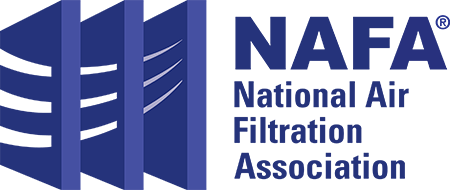Aerosol Treatment Chambers
June 30, 2011
While the largest amount of filtration business in a healthcare facility is typically found within the air handling system, there are many unique applications where filtration is used as part of a diagnostic or medical treatment procedure. One of these applications is the aerosol treatment chamber.
An aerosol treatment chamber or booth is a negative pressure mini-environment that has HEPA filtered exhaust. The booth is maintained under negative pressure in order to prevent harmful airborne pathogens or treatment aerosols from being introduced into the facility. These booths are often provided with a pressure monitor that continually shows the pressure status of the booth and has an audible alarm to alert workers if the negative pressure is ever compromised.
A patient sits in the chamber during the administration of an aerosol used for diagnostic analysis or therapeutic treatment. The most common applications for aerosol treatment chambers are sputum induction procedures and aerosolized pentamidine treatments.
Pentamidine treatments:

Pentamidine is an aerosol that may be used in the treatment of immune compromised pneumonia patients. This aerosol though, may adversely affect the health of caregivers if there is repeated exposure over a pro-longed period of time. To reduce the risk to staff, these treatments are normally given to patients inside an aerosol treatment chamber or a negative pressure isolation room.
Sputum Induction: Sputum induction is typically performed on patients to confirm or rule out a diagnosis of active TB disease. It is used to obtain sputum for diagnostic purposes when patients are unable to spontaneously expectorate a specimen. The procedure uses sterile water or hypertonic saline to irritate the airway, increase secretions, promote coughing, and produce a specimen. The CDC and the Occupational Safety and Health Administration (OSHA) both classify sputum induction as a high-risk procedure when performed on a suspected or known infectious TB patient. This procedure induces coughing, resulting in a greater likelihood that infectious droplet nuclei are expelled into room air.1
Performing a sputum induction in an aerosol treatment chamber with HEPA filtered exhaust, instead of a negative pressure room may provide increased protection for the healthcare worker administering the test. This eliminates the need for the healthcare worker to wear a respirator during the procedure.2

The HEPA filtered exhaust from the booth or chamber may be discharged back into the room or exhausted to the outside.3 If the exhaust air is discharged into the room, a HEPA filter should be incorporated at the discharge duct or vent of the device. The exhaust fan should be located on the discharge side of the HEPA filter to ensure that the air pressure in the filter housing and booth is negative with respect to adjacent areas. Uncontaminated air from the room will flow into the booth through all openings, thus preventing infectious droplet nuclei in the booth from escaping into the room.4
The HEPA filters on these enclosures should have appropriate pre-filtration and should be changed when the enclosure is no longer able to maintain negative pressure or provide a minimum of 12 air changes per hour of HEPA filtered exhaust. When changing the filters the maintenance person should wear N-95 respirators and gloves.5 The filter should be handled gently and sealed into a plastic bag after removal. The CDC does not recommend red bagging of these filters, stating that disposal in normal trash 6 is appropriate. Local and state codes should be consulted though, as they may differ.
References:
1, 2, 3 Francis J. Curry National Tuberculosis Center, Institutional Consultation Services. Conducting Sputum Induction Safely. 1999.
4, 5 Guidelines for Preventing the Transmission of Mycobacterium tuberculosis in Health-Care Settings 2005 (Draft) Department of Health and Human Services, Centers for Disease Control and Prevention.
6 Guidelines for Environmental Infection Control in Health-Care Facilities. Recommendations of CDC and the Healthcare Infection Control Practices Advisory Committee (HICPAC) 2003.
